
Dodge car cover may sound like just a dust shield, but behind that small choice is an entire story of heat, moisture, wind, dust, and daily habits that can decide how long your Charger, Challenger, Durango, Ram, or Viper keeps its edge. Many owners in the United States share the same pain: buying a thick, “fully waterproof” bargain cover, then a few weeks later noticing a musty odor in the cabin, speckled mineral rings on chrome, faint water prints on paint, and hairline swirls that show up under sun. This article gets to the root causes: why a poor-quality car cover can damage your car, the most common triggers, what happens if you ignore them, and the fixes that help you choose a cover that is truly ultra durable, compact, lightweight, and heat dissipating for the entire Dodge lineup.

Related Articles: DeTomaso Car Covers - Reduce cabin temperature and which color cover is cleaner while keeping the car cool?
Why your Dodge needs a “proper” car cover more than you think

Starting from real use keeps us clear-headed when shopping. Dodge is known for pure American muscle design language: deep, dark paints, strong creases, crisp vents, bright chrome, and aero lines placed with intent. Charger and Challenger wear broad, powerful fenders, Durango brings lots of glass and a roof that catches sun, Ram adds a bed and bulky accessories, while Viper sits very low with knife-like edges. The visual character is powerful, yet it also makes the surfaces more sensitive to repeated friction, local heat buildup, and sprinkler or night-dew mineral rings.
The deeper reason is this body geometry with sharp transitions. If the cover is not shaped correctly, it creates wind pockets, the fabric flutters, and it rubs exactly on paint edges, slowly printing dull trails along those body lines. A proper Dodge car cover must hit three targets at once: reflect heat to lower surface peaks, breathe so moisture is not trapped, and fit the vehicle precisely so repeated friction at sensitive points is minimized.
Related Articles: DeSoto car cover: why classic two-tone paint drifts out of balance if you do not cover correctly
The pain from poor-quality covers: causes, symptoms, and what happens if you let it ride
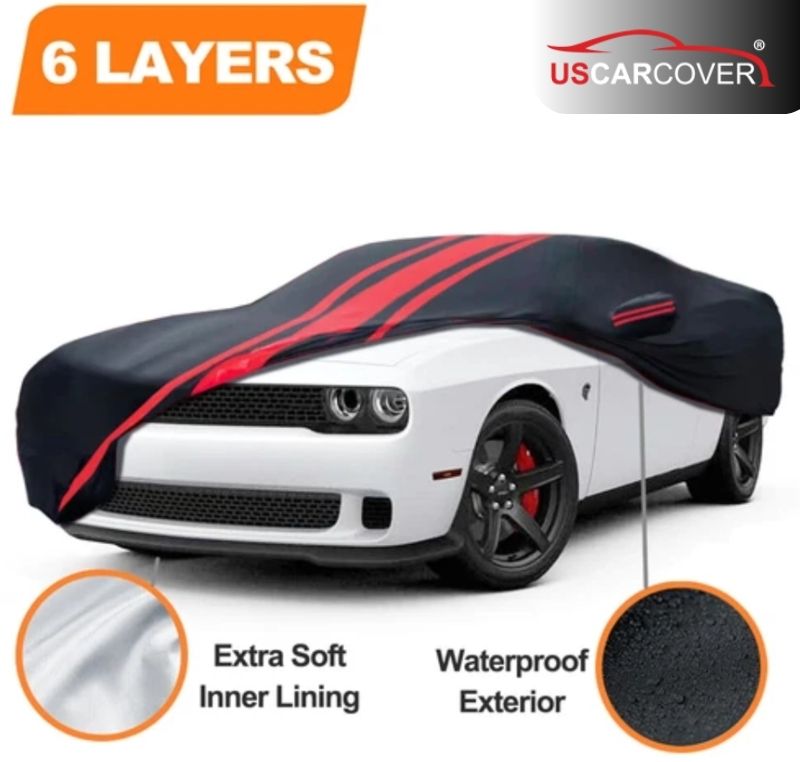
Most problems do not arrive on day one. They build over weeks and seasons. Understand the cause, and you will know where to correct first. The first culprit is trapped moisture and poor ventilation. Many “raincoat-style” covers block droplets well but do not let vapor out. After a short shower, a night of dew, or right after washing, moisture stays pressed against paint and chrome. The result is a faint musty smell in the cabin, tiny mineral rings on glass and brightwork, and even light mildew on carpets if the car sits for days.
Next comes coarse, dark-dyed liners. In hot and humid weather, unstable dyes can smear onto light paint. Rough, fibrous liners turn into “micro sandpaper” each time you cover and uncover. Swirl marks appear fastest on black, dark gray, and red when viewed in sun or streetlight. A very common trigger is free-size fitment. Extra fabric invites wind to get under the cover and puff it. The fabric will rub along hood edges, wheel-arch lips, spoilers, and chrome trim. After a few windy spells, you start seeing dull trails exactly along those body contours.
Finally, weak UV durability and a grime-prone outer face are trouble. Under high sun in Arizona or Texas, fabric can embrittle and fade, seams open, grommets tear. As the cover degrades, it shifts and rubs harder. If the outer face grabs dust easily, every wipe you make increases friction risk and moves grit closer to the paint. If you ignore these, you pay for paint correction, odor treatment, trim replacement, or spot respray. More than money, you lose the morning pride when you lift the cover and the car no longer looks “on point."
Related Articles: DeLorean car cover: block pollen, tree sap, and bird droppings, quick scratch
“Ultra durable, compact, lightweight” does not mean the thicker the better
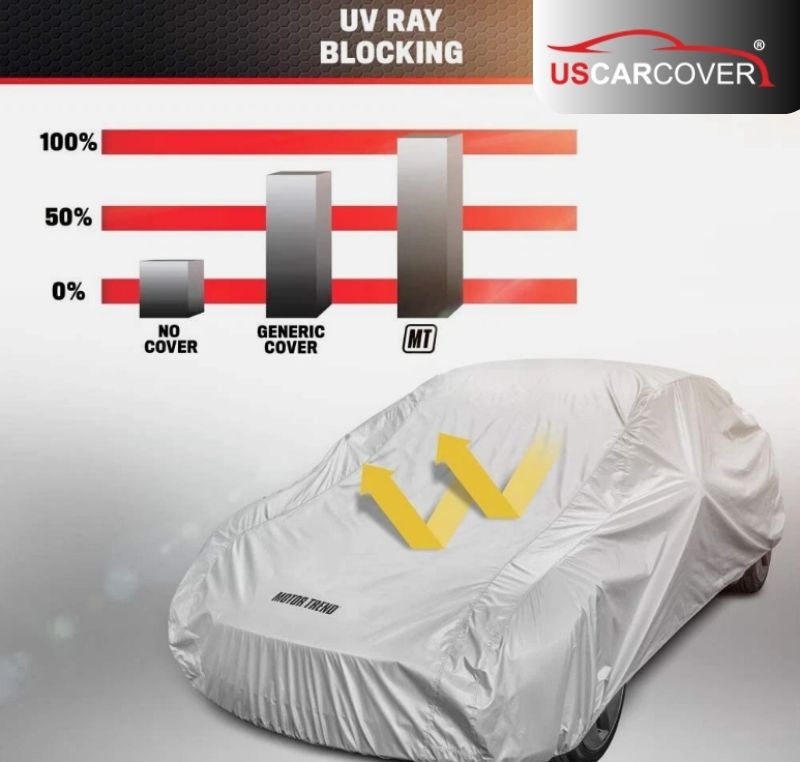
Many people equate durability with thickness. In reality, durability must come with compactness and low weight so you can handle the cover solo without dragging it across concrete or yanking on corners. In materials terms, a multi-layer breathable construction with tear-resistant weave is the key. The fabric should tolerate short shock loads yet let water vapor move outward. Reasonable weight helps the cover hug panels without loading paint edges and reduces inertia when wind pours through a carport. Strong UV stability keeps the fabric in shape without shrinking or sagging, which means straps, grommets, and elastic hems keep their “rhythm” season after season.
Pick a cover that is too heavy and you will avoid daily use, turning protection into a formality. Pick one that is too flimsy and a few gusty days will tear it and scuff the paint. “Ultra durable, compact, lightweight” is the balance between tear strength, a gentle liner, and true vapor release.
What good heat dissipation does for paint, interior, and electronics
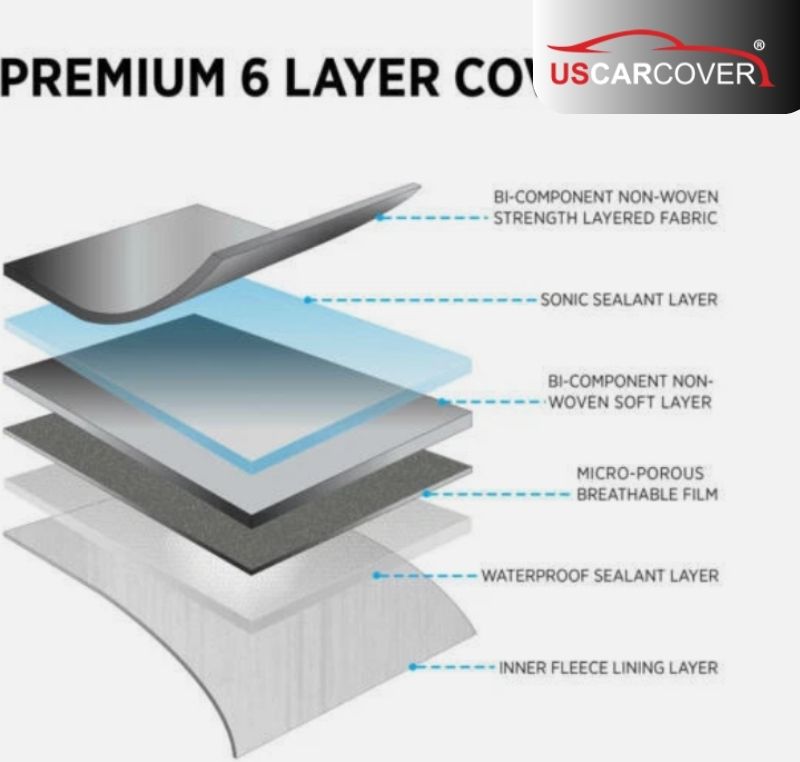
Heat dissipation is more than a cool-to-the-touch surface. When a heat reflective outer face cuts solar absorption, temperatures on paint, glass, and interior drop noticeably. Leather does not get “baked,” soft plastics and dash adhesives age more slowly, and screens and modules avoid repeated thermal shocks. At night, the cabin cools gradually instead of plunging, which helps stay below the dew point. Combined with hooded vents placed well, warm air bleeds out without inviting wind-driven water in. The end result is less inside fog on glass, no morning wipe-downs before you start the car, and far fewer oxidized connectors.
Related Articles: How to Protect Datsun from Harsh Sun and UV: keep paint and interior looking new
Usage mistakes that make even a good cover underperform, and how to fix them now
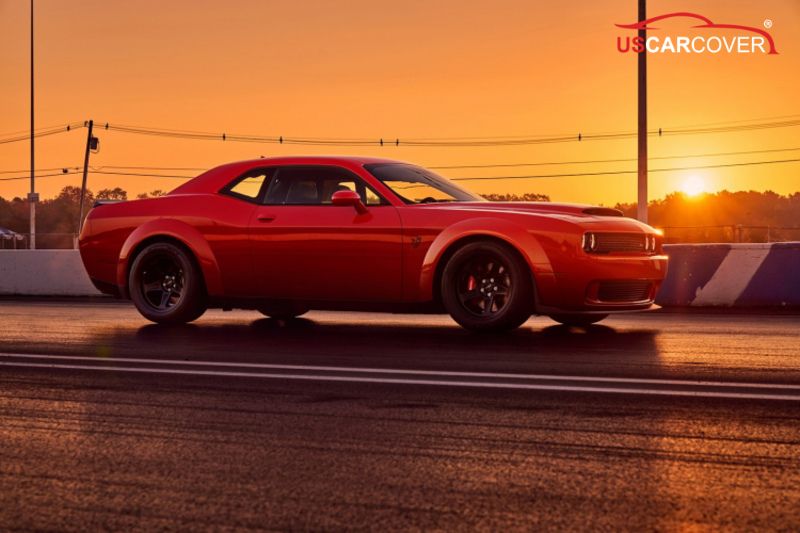
Many issues start with habit. Covering while the car is still hot or wet is a recipe for condensation. The fix is simple: wait a few minutes to cool, towel off large droplets on glass and brightwork, crack a door for a few seconds to vent heat, then cover. Covering over dusty panels invites swirl marks. A quick shake over glass and hood, or a light blow-off, removes the “invisible micro sandpaper." Using a free-size cover is the root of fluttering. Choose custom-fit for the model, especially for Charger and Challenger widebody or a low Viper. Cranking one strap too tight while others are loose tears fabric and imprints paint. Distribute the load evenly with wide, soft straps. Folding and storing while damp breeds odor and stains. Always dry completely in shade and store in a breathable bag. Washing too rarely lets the liner load up with grit. Keep a regular wash cycle with mild detergent and no hot drying so the fabric retains its function.
Choose a Dodge car cover by U.S. climate so performance is real, not theoretical
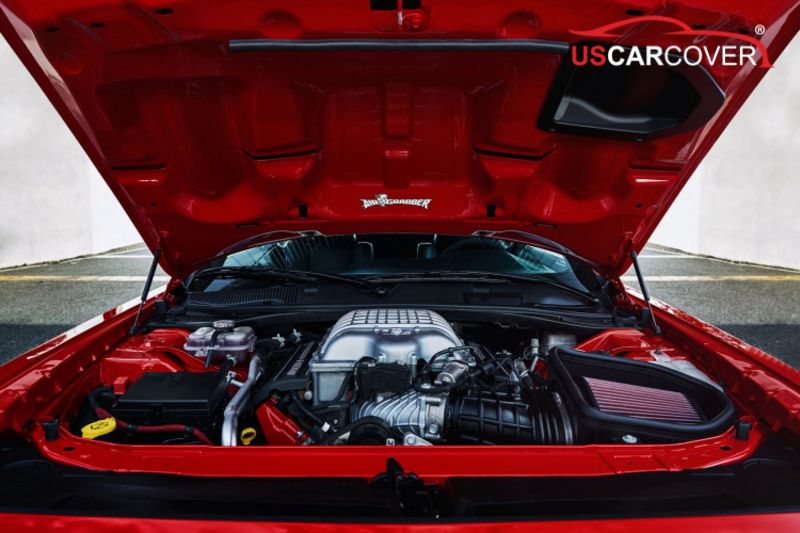
Climate determines the cover spec, not shopping habit. In Arizona, Nevada, and inland California, high sun and dry wind call for a bright, reflective outer face, true breathability, effective vents, and a low-stick face so you can shake off wildfire ash and site dust. In Florida and the Gulf Coast, humid salt air and afternoon squalls want quick-drying fabric, easy washing, hooded vents, and a routine of drying brightwork before long storage.
In New England and the Midwest during pollen season, a low-stick face lets you shake clean each morning, and an ultra-soft liner supports daily on-off without micro-marring. The Pacific Northwest needs real breathability, tight seams, and thorough drying before storage to avoid musty odors. For city overnight curb parking, look for discreet reflective piping so you can spot the car quickly, a matte face that does not attract attention, and a plastic-coated underbody lock cable that makes quick grabs harder.
Related Articles: Daimler car cover: Long-term storage, quick drying, no musty odor, no veneer stains
Model-by-model compatibility for Dodge: why precise fitment matters
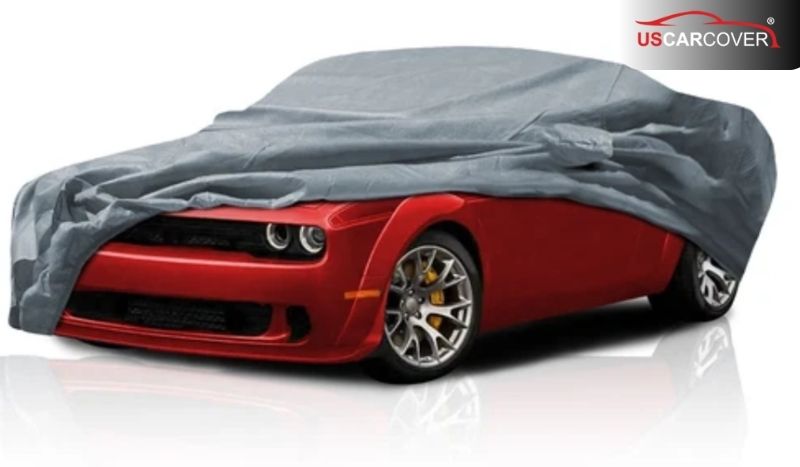
Each Dodge model has a “map of sensitive points.” Charger and Challenger, especially widebody trims, have large arch lips, spoilers, and vented hoods. If the pattern does not crown these shapes, extra fabric will rub those edges. Durango presents large glass that catches slanting sun, so vent placement and multi-point tie-downs help keep the cover stable in a carport. Ram 1500/2500 adds a bed, racks, and accessories, so the cover must be configured to the actual setup to avoid slack at bed corners. Viper is very low with many sharp edges, which demands an ultra-soft liner, gentle elastic hems, and light, clean handling that never drags the cover.
Try to use a single universal pattern and seam lines end up in the wrong places, fabric pools and rubs on sharp transitions, and over time the sheen fades exactly where you care most.
Materials and structure to survive wind, harsh sun, and persistent humidity
Before buying, imagine the cover living with you for many seasons. Multi-layer breathability is the foundation because only with ongoing vapor release will the cover avoid ballooning after a sun-shower cycle. A tear-resistant or abrasion-tough weave helps the fabric tolerate short yanks without propagating rips. Stable UV resistance is mandatory in high-sun regions or the fabric will chalk and crack, lose shape, and increase friction. Load-bearing points such as grommets, mirror pockets, roof crown, and front and rear corners should be reinforced to keep shape when gusts hit. A silver or light titanium gray outer face reflects well, with a matte finish so daytime handling is comfortable, non-glare, and less fingerprint-prone. The liner should be ultra-soft, light colored, and antistatic to keep dust off and tell you clearly when it needs a wash.
Related Articles: Citroen Car Cover: Cooling the car, protecting the interior, keeping the cabin cooler when parked outdoors
A quick checklist by popular Dodge models to guide a one-minute decision

Too many choices can freeze decisions. A short list keeps you moving without mistakes. For Charger and Challenger, prioritize custom-fit for widebody, ultra-soft liner, shoulder vents, and multi-point straps. For Durango, use effective venting, a low-stick face, secure straps, and gentle hems. For Ram, order to your rack and tonneau configuration, reinforced grommets, and a plastic-coated lock cable. For Viper, choose an ultra-soft liner, gentle hems, low-stick outer face, and never drag during handling. If you own multiple vehicles, standardize the sequence “dry droplets – shake dust – open vents – lock cable” so it becomes muscle memory.
Car cover maintenance: keep the cover “fit” so the car stays clean and safe
A dirty or damp cover becomes the source of scratches and odor. If you park outdoors, wash every 2 to 4 weeks. In a garage, 6 to 8 weeks is typical. Use a mild cleaner, no harsh bleach, and no hot drying. Dry completely in shade to preserve shape. Lint-roll or lightly vacuum the liner to keep it smooth. Monthly, check seams, grommets, straps, and elastic hems and reinforce ahead of hot or storm seasons. Store in a breathable bag when not in use to avoid moisture build-up.
Economic upside when you get it right the first time
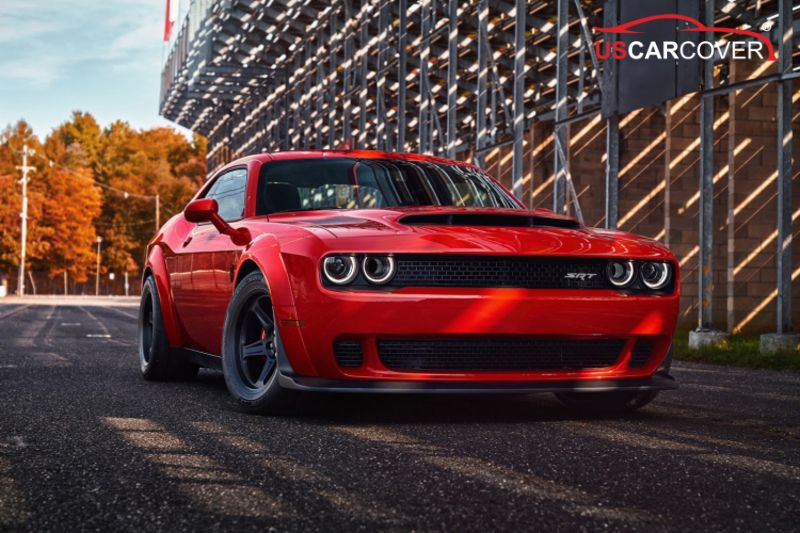
A single full paint correction plus deodorizing can match or exceed the price of a quality cover. Add a few trim replacements and costs climb faster than you expect. Meanwhile, a correct Dodge car cover reduces wash frequency, cuts cleanup time after rain or pollen, and lowers the risk of dulling from repeated rub. Long term, resale value benefits because your surfaces stay sharp.
Related Articles: Chrysler car cover - Storm and wind protection: add a physical lock, stabilize form, stop ballooning that scuffs paint
FAQ
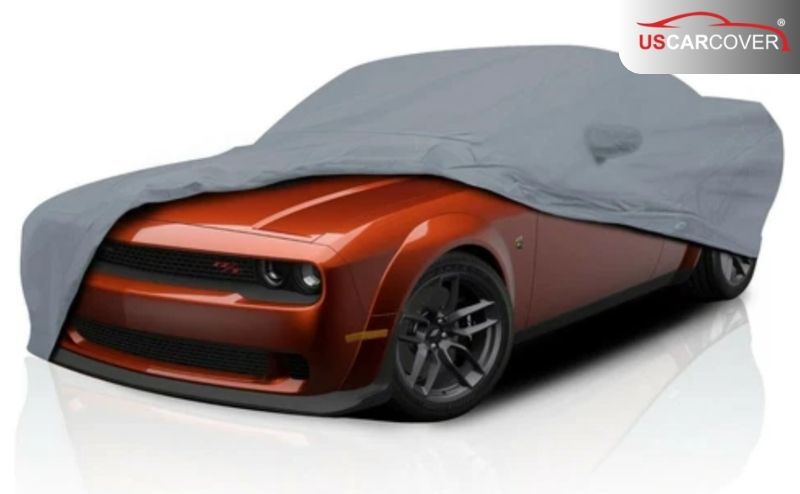
Is a Dodge car cover necessary if I park in a garage:
-Yes. If the garage is humid, has slanting sun through a window, or collects fine dust, a breathable cover limits moisture, dust, and pollen and keeps the interior cleaner.
Which cover color keeps the car cool yet does not look dirty immediately:
-Silver gray or light titanium strike a practical balance. They reflect solar energy and do not show grime as quickly as pure white.
How often should I wash the cover:
-Outdoors every 2 to 4 weeks, in a garage every 6 to 8 weeks. Always dry completely in shade before storage.
Can I cover the car by myself:
-Yes. With a compact, lightweight, well-fitted cover plus a 90-second routine, one person can handle it comfortably.
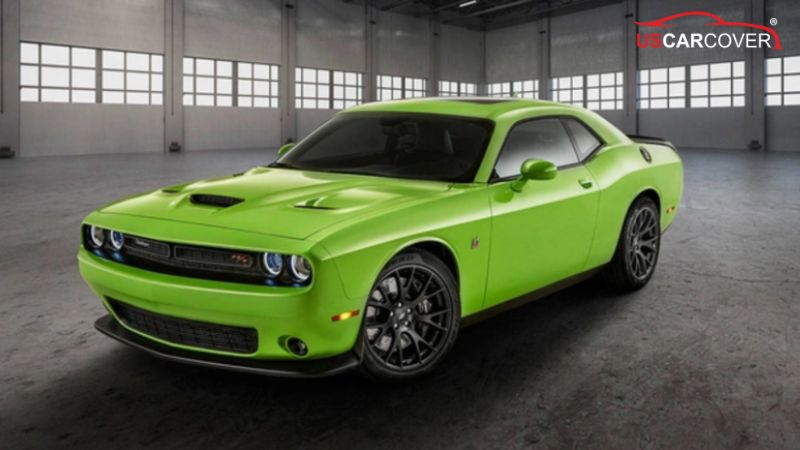
The essence of an ultra durable, compact, lightweight, heat-dissipating Dodge car cover sits on four pillars: a UV-resistant heat reflective outer face, multi-layer breathable quick-dry fabric, an ultra-soft light-colored liner, and patterning that respects the geometry of each Dodge model. Add hooded vents, wide soft straps that spread load, a plastic-coated lock cable, and a 90-second routine every time you park. Once these become habit, the cover stops being a “comfort blanket” and turns into a daily passive protection system. Deep paint stays deep, interiors run cooler, electronics behave, and every morning you lift the cover your Dodge is ready to roll.
